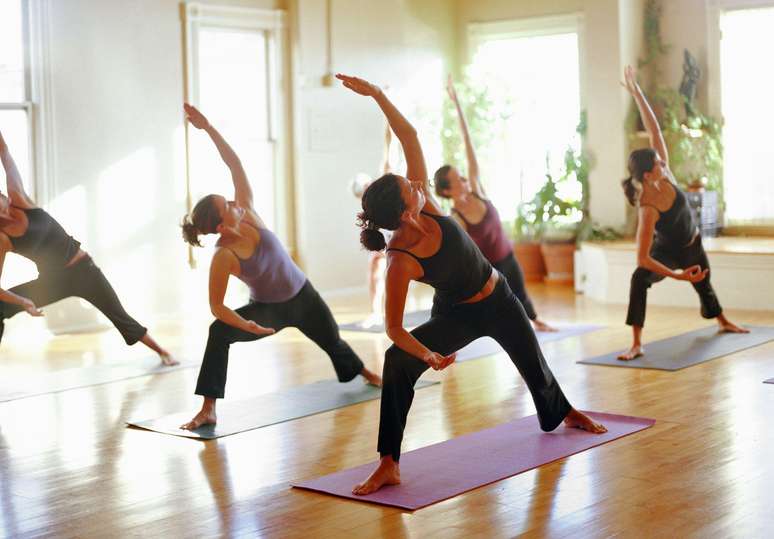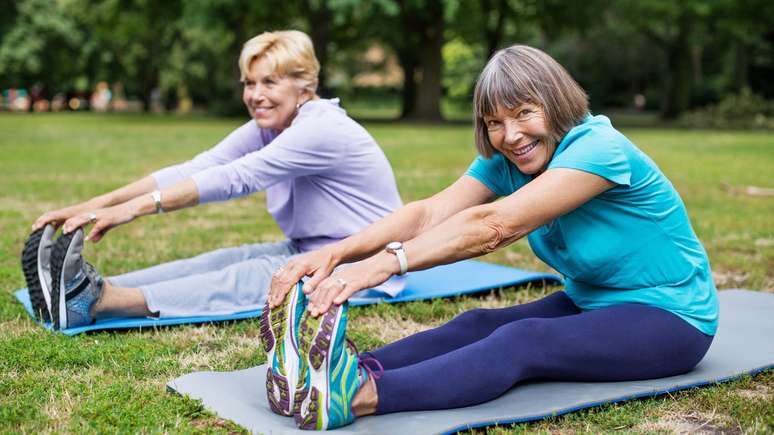Staying flexible is the secret to enjoying an active, pain-free life – even just a few minutes of stretching a day can make a big difference.
Flexibility may not be the first thing that comes to mind when you think of health and fitness, but it is one of the most important aspects of maintaining overall well-being.
In short, flexibility has to do with how easily your muscles and joints can stretch and move. Even simple everyday movements, like reaching for something from a high shelf or bending over to tie your shoelaces, require some level of flexibility.
Flexibility is key to keeping your body in tip-top shape, playing an important role in your overall health and how your body functions on a daily basis.
Below we share some examples of why this is important and provide tips on how to maintain flexibility:
1. Prevents injuries
One of the major benefits of being flexible is reducing the risk of injury, including pulled muscles and sprains.
Think about athletes who stretch regularly. It’s not just for show. Stretching keeps your muscles flexible and ready for action, reducing the chances of injury during a workout or competition.
Even if you’re not an athlete, staying flexible can help you avoid the dreaded injuries that can occur in everyday life.
Studies show that regular stretching can significantly reduce the risk of injury, especially in older adults. Stretching makes the muscle tendon units (where the muscle meets the tendon) more flexible, which helps the muscles resist overstretching, leading to fewer injuries.
To reap the benefits of flexibility training and improve joint health, it is recommended to stretch regularly three times a week, holding each stretch for 10 to 60 seconds.
2. Better balance and posture
Have you ever noticed that sitting at a desk all day can make you feel stiff and hunched over? Flexibility exercises can help with this. Stretching keeps your muscles elongated and relaxed, helping you maintain better posture and balance in the long run.
This is especially important as you age, as poor posture can lead to falls and other injuries. Research suggests that flexibility training can improve your alignment and posture, reducing your risk of falls and helping you move more confidently.
3. Better performance
Whether you’re playing a sport, going for a run, or just keeping up with your kids, flexibility can make a big difference in your performance.
Flexible muscles allow for a greater range of motion, making it easier to perform movements that require strength, speed, and agility.
Research shows that stretching improves athletic performance by increasing muscle efficiency and reducing the risk of overuse injuries.
4. Reduces muscle tension and pain
In today’s world, many of us spend a lot of time sitting, which can lead to muscle tension and chronic pain, especially in the back and neck.
Flexibility exercises, such as stretching or yoga, can help relieve this tension. These activities lengthen muscles and improve blood flow, helping to relieve discomfort and prevent the development of chronic pain.
Studies show that stretching at least three times a week is effective at reducing muscle tension and relieving pain, especially in tension-prone areas like the lower back and shoulders.
5. Improves circulation
Good circulation is essential to our overall health and flexibility exercises can help improve this.
When you stretch, you increase blood flow to your muscles, which helps them recover faster and stay healthy. Improved circulation also benefits your heart and can help prevent long-term health problems like cardiovascular disease.
Research indicates that regularly practicing flexibility exercises, especially stretching, can increase circulation and contribute to better cardiovascular health.
How to increase flexibility
To improve flexibility you need to stretch.

There are several stretching techniques. The best known is static stretching, in which you hold a certain position for a short period of time (usually 10 to 60 seconds).
Dynamic stretching, on the other hand, uses controlled or pushing movements to lengthen muscles – and is typically done a few times. Leg swings are a good example of dynamic stretching. Yoga and Pilates are also examples of flexibility training that contain a strength element.
Flexibility is not just for young people or athletes. It is something that everyone can benefit from and improve, no matter what your age.
Children and adolescents
Children are naturally more flexible, but that doesn’t mean they shouldn’t work on their flexibility. Activities like yoga, dance, and active play can help children and teens maintain and improve their flexibility. These activities are not only fun, but they also promote overall physical development, coordination, and balance.
Adults
As we get older, we need to be more intentional about flexibility.
Try incorporating a series of stretching exercises into your day. Even a quick morning stretch or yoga session can make a big difference. Yoga and Pilates are especially effective because they combine flexibility and strength, helping you maintain your overall fitness.
It is recommended that adults stretch at least two to three times a week, holding each stretch for 10 to 60 seconds to lengthen major muscle groups. Ideally, do this when your muscles are warmed up for maximum benefit.
Practicing flexibility exercises regularly will also help you maintain good joint health as you age.
Elderly
In the case of older adults, flexibility is essential to maintain mobility and independence.
Gentle stretching exercises, such as chair yoga, are great options for improving flexibility without putting too much pressure on your body. These exercises can also prevent stiffness, which is common as you age.
Research shows that older adults who stretch regularly have a lower risk of falling and a better quality of life. They should also try to stretch 2 to 3 times a week.
So whether you’re young or old, staying flexible is the key to enjoying an active, pain-free life. Even just a few minutes of stretching a day can make a big difference.
* Athalie Redwood-Brown is Professor of Sports Performance Analysis at Nottingham Trent University in the UK.
Jen Wilson is an exercise and health specialist at the same institution’s Academy of Sport and Wellness.
This article was originally published on the academic news website The conversation and republished here under a Creative Commons license. Read the original version here (in English).
Source: Terra
Rose James is a Gossipify movie and series reviewer known for her in-depth analysis and unique perspective on the latest releases. With a background in film studies, she provides engaging and informative reviews, and keeps readers up to date with industry trends and emerging talents.




![New Day ahead: Tera discovers an incredible truth about Gabriel and Audrey … which is waiting for you from the week of 2025 to 18, July 18, 2025 [SPOILERS] New Day ahead: Tera discovers an incredible truth about Gabriel and Audrey … which is waiting for you from the week of 2025 to 18, July 18, 2025 [SPOILERS]](https://fr.web.img5.acsta.net/img/b6/e5/b6e5ddee257bc9a8ae5bb9587db6efc3.jpg)


